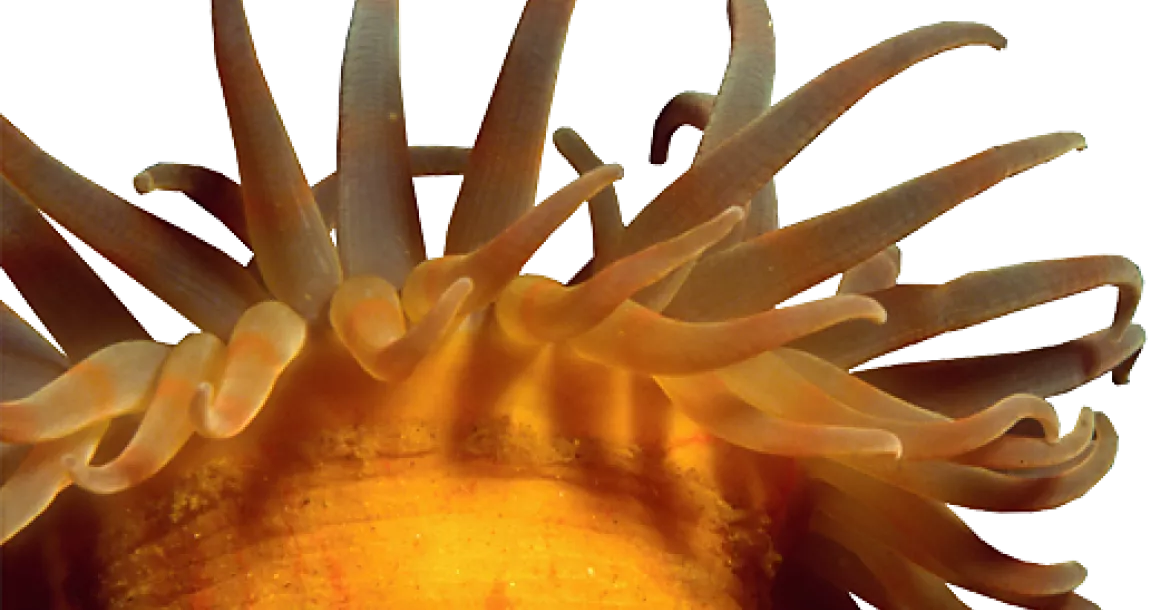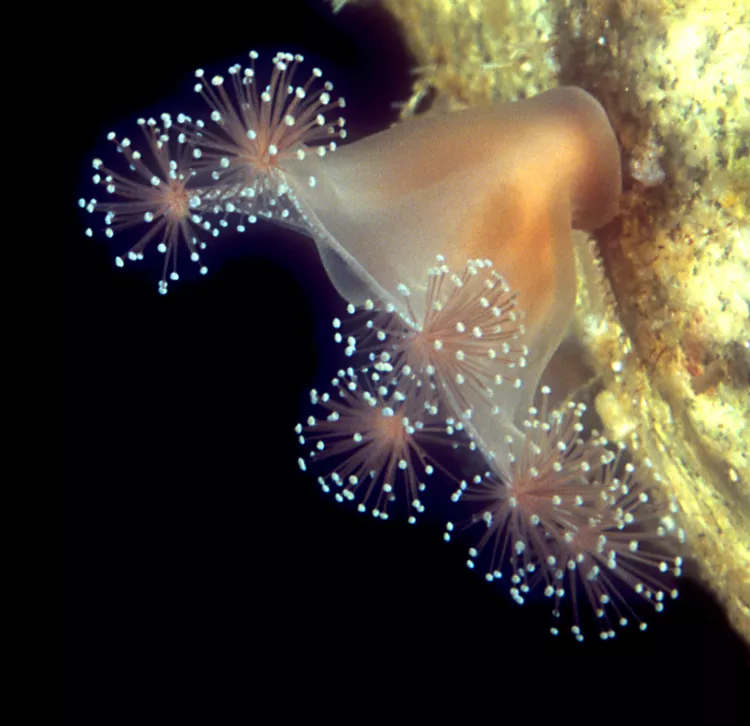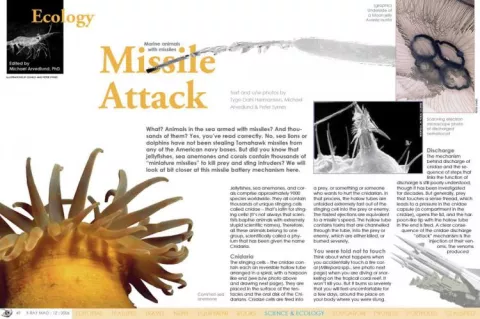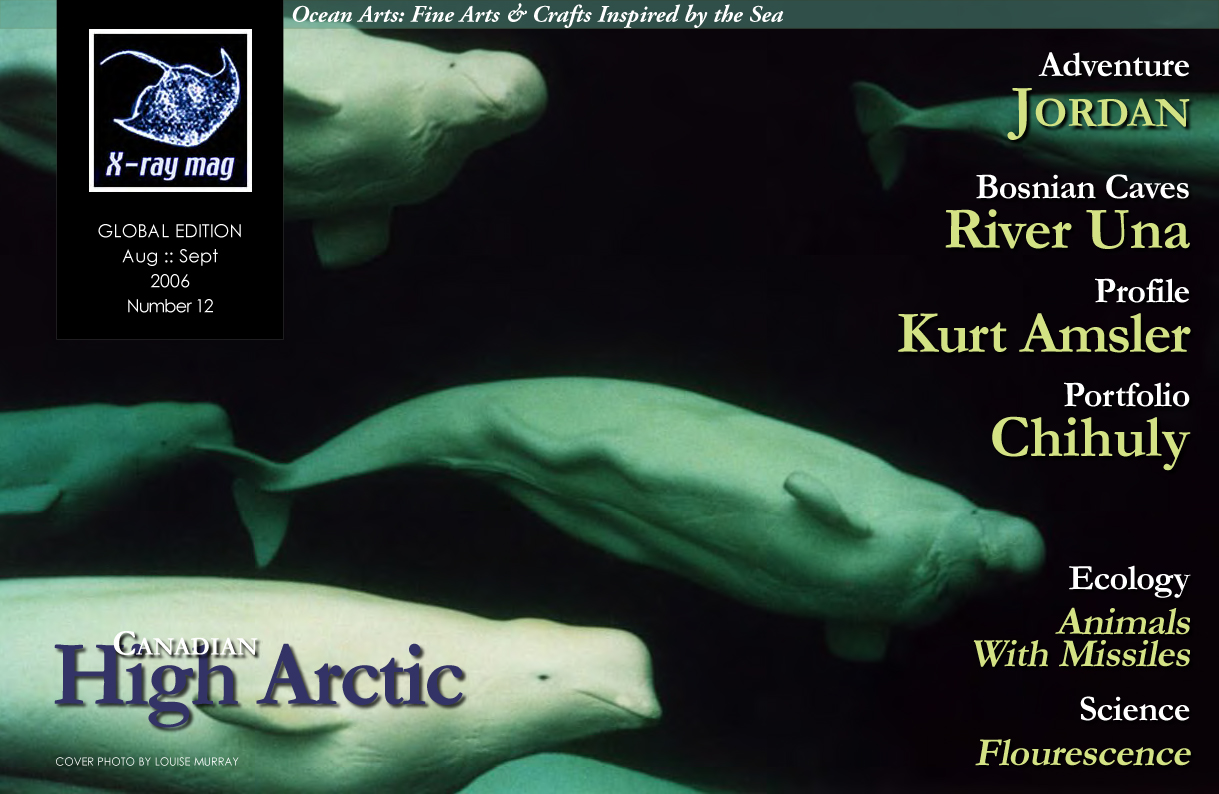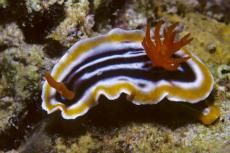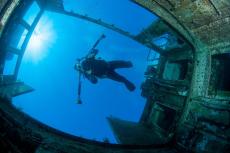
Animals with Missiles
What? Animals in the sea armed with missiles? And thousands of them? Yes, you’ve read correctly. No, sea lions or dolphins have not been stealing Tomahawk missiles from any of the American navy bases. But did you know that jellyfishes, sea anemones and corals contain thousands of “miniature missiles” to kill prey and sting intruders? We will look at bit closer at this missile battery mechanism here.
Contributed by
Cnidaria
The stinging cells – the cnidae contain each an reversible hollow tube arranged in a spiral, with a harpoon like end (see b/w photo above and drawing net page). They are placed in the surface of the tentacles and the oral disk of the Cnidarians.
Cnidae cells are fired into a prey, or something or someone who wants to hurt the cnidarian. In that process, the hollow tubes are unfolded extremely fast out of the stinging cell into the prey or enemy. The fastest ejections are equivalent to a missile’s speed. The hollow tube contains toxins that are channelled through the tube, into the prey or enemy, which are either killed, or burned severely.
You were told not to touch
Think about what happens when you accidentally touch a fire coral (Millepora spp., see photo next page) when you are diving or snorkeling on the tropical coral reef. It won’t kill you. But it burns so severely that you will feel uncomfortable for a few days, around the place on your body where you were stung.
Discharge
The mechanism behind discharge of cnidae and the sequence of steps that links the function of discharge is still poorly understood, though it has been investigated for decades.
But generally, prey that touches a sense thread, which leads to a pressure in the cnidae capsule (a compartment in the cnidae), opens the lid, and the harpoon-like tip with the hollow tube in the end is fired. A clear consequence of the cnidae discharge “attack” mechanism is the injection of their venoms. The venoms produced by these animals are used for capture of prey, and they have shown to interfere with key functions of physiological systems.
Dependent on the mode of action these toxins can be divided into cytolysins and neurotoxins. Cytolysins act by puncturing the cells so the content is expelled, whereas neurotoxins interfere with neural activity. Because of this, such toxins can be used as an investigative tool to map physiological mechanisms.
Anemones and wasps
Venoms from sea anemones are in some instances capable of inflicting serious burns to people who touch them. However, stings from the Portuguese man-of-war (Physalia physalis), the Australian sea wasp (Chironex fleckeri) some scyphozoans such as Stomolophus spp. may actually kill people. Irukandji syndrome is a seldom fatal, but nevertheless painful condition induced by the sting of the Irukandji jellyfish (Carukia barnesi).
The Portuguese man-of-war have up to 9m long unfolded capturing arms each harbouring 700,000 toxic cnidae. If these arms are stretched they can gain a length of 50m. An adult Australian sea wasp has no less than 200 million toxic cnidae, together enough to kill approximately 250 people. Both of these stingers occur in schools, which makes them even more dangerous.
Jellyfish stings are a common summer hazard for sea bathers throughout the world. For example, it is estimated that in excess of 10,000 jellyfish stings occur alone in Australia each year.
Antivenoms
Moreover, in at least some parts of the Pacific, the incidence of envenomation from marine bites and stings appears to be rising due to increasing marine activities by both local and tourist populations.
In this context, new envenomation syndromes and new species of medically significant jellyfish are likely to be encountered according to Dr Kenneth D. Winkel at the Australian Venom Research Unit, University of Melbourne, who leads an international team team of Australian and American scientists conducting research into the development of new jellyfish antivenoms.
More research needed
Dr Winkel states in a recently published overview: “If snake antivenoms are considered orphan drugs, then jellyfish antivenoms are the poorest of the orphans. Despite the diversity, ubiquity and toxicity of the venomous cnidarians, only a single antivenom is available for jellyfish stings worldwide. That antivenom, an ovine whole IgG product, is directed against the Sea wasp (Chironex fleckeri).
It also neutralises the venom of closely related cubozoans such as Chiropsalmus quadrigatus. The recognition of the life-threatening effects of various other jellyfish demonstrates the need for broadening the specificity of the existing product and/or developing additional specific jellyfish antivenoms.”
Published in
-
X-Ray Mag #12
- Læs mere om X-Ray Mag #12
- Log ind for at skrive kommentarer
